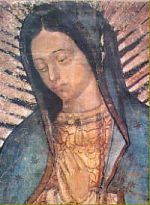Make your gift today!
Help keep Catholics around the world educated and informed.
Already donated? Log in to stop seeing these donation pop-ups.
Catholic Prayer: Praying the Rosary
Description:
Fr. Weiser explains the origin of the rosary and how to pray it properly. We highly recommend that you read Pope John Paul II's Apostolic Letter Rosarium Virginis Mariae, or "On the Most Holy Rosary." It explains even further this wonderful devotion, and introduces the optional mysteries of light, or Luminous mysteries.
Prayer:
The rosary is not primarily a devotion to the Blessed Virgin, but a meditative "going" through the life, passion, death and resurrection of Christ the Lord. It actually began as a kind of "lay breviary" in the twelfth century, when pious people who could not read and did not know Latin, were advised by the Benedictine Fathers to substitute 150 Hail Marys for the 150 psalms of the divine Office, and to say them in honor of the life-giving mysteries of our Lord's redemptive sojourn on earth. St. Dominic encountered this practice in Italy and was so impressed by it that he spread it far and wide.
The rosary is intended to bring us ever closer to Christ in humble devotion and sincere love. What makes this effective meditation on the mysteries so especially fruitful, however, is the fact that we combine it with prayer to Mary. We go through the Lord's life on the hand of the Blessed Mother: this is the deepest significance of the rosary prayer.
Every detail of the rosary consists of liturgical texts which are used in the Mass and divine Office (Creed, Glory be . . . , Our Father, Hail Mary). The mysteries take us through the cycle of the ecclesiastical year, representing the main aspects of the Savior's salvific life.
It was for this reason, surely, that Mary asked her children so pleadingly to say the rosary every day when she appeared at La Salette, Lourdes, and Fatima. She is much too humble to request a prayer that would merely glorify herself. No, she asks for the rosary because, through it, she can most effectively guide us into greater love of her divine Son and bring us closer to Him.
There is a certain difficulty, however, which many souls encounter in saying the rosary. It lies in the combination of direct address to Mary (in the Hail Marys) and meditative thinking on the mysteries of Christ's life. How can both things be done at once? This difficulty has been felt centuries ago and is still felt by many today. A simple and helpful solution was found and propagated by Jesuit and Dominican Fathers at the end of the sixteenth century.
It consists in putting the mystery, in a special phrase, directly after the word "Jesus" in every Hail Mary. Thus the whole recitation of the rosary becomes one psychological unit of undivided effort in effective prayer. Each Hail Mary could be compared to a golden ring in which the diamond of the mystery is beautifully and fittingly set.
This way of reciting the rosary has the full approval of the Holy See. It is used by the faithful in many countries of Europe. There is nothing to prevent you from using it, if you should find it helpful and consoling.
Here are the 15 mysteries in their approved English text, as you may insert them in the respective decades after the word "Jesus" in every Hail Mary:
The Joyful Mysteries
1) Whom thou didst conceive of the Holy Ghost.
2) Whom thou didst carry to St. Elizabeth.
3) Whom thou hast born at Bethlehem.
4) Whom thou didst present in the Temple.
5) Whom thou didst find in the Temple.
The Sorrowful Mysteries
1) Who sweat blood for us.
2) Who was scourged for us.
3) Who was crowned with thorns for us.
4) Who carried His cross for us.
5) Who was crucified for us.
The Glorious Mysteries
1) Who arose from the dead.
2) Who ascended into heaven.
3) Who sent us the Holy Ghost.
4) Who took thee up into heaven.
5) Who crowned thee in heaven.






